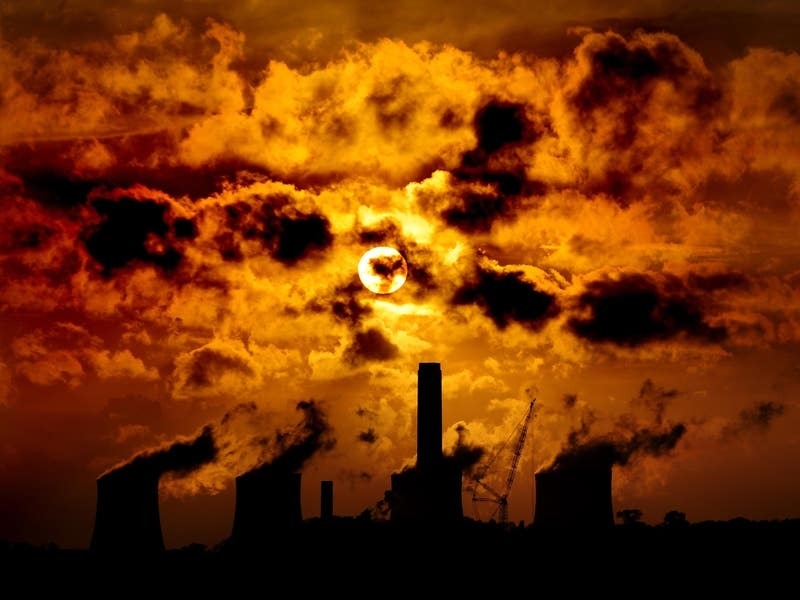Global carbon emissions in 2022 remain at record highs, with no sign of the falls needed to curb dangerous climate change, scientists have warned.
If the world continues with current levels of emissions, there is a 50% chance that global temperature rises will hit 1.5C – a threshold beyond which the worst impacts of climate change are expected – in nine years, they said.
Emissions would have to fall at rates comparable to 2020 – when Covid-19 restrictions shut down transport, industry and economic activities – every year to keep temperature rises to 1.5C in the long term, the experts say.
But carbon pollution from burning fossil fuels has risen 1% on 2021 levels, the analysis from the Global Carbon Project says, and is now slightly above the record levels seen in 2019.
Total carbon emissions for 2022, which also includes deforestation and other land use changes, are set to be around 40.6 billion tonnes, up slightly from 2021 and close to the record 40.9 billion tonnes emitted pre-pandemic in 2019.
The Global Carbon Project has involved more than 100 scientists from 80 organisations across 18 countries, and its results – published in the journal Earth System Science Data – come as countries meet for the latest round of climate talks, Cop27, in Sharm El-Sheikh, Egypt.
While the rate of growth in emissions has slowed, the world is not taking the action required to make them peak and decline rapidly to limit temperature rises, the scientists said.
Professor Pierre Friedlingstein, from the University of Exeter’s Global Systems Institute, who led the study said: “This year we see yet another rise in global fossil carbon dioxide (CO2) emissions, when we need a rapid decline.
“There are some positive signs, but leaders meeting at Cop27 will have to take meaningful action if we are to have any chance of limiting global warming close to 1.5C.”
Professor Corinne Le Quere, from the University of East Anglia’s School of Environmental Sciences, said: “Our findings reveal turbulence in emissions patterns this year resulting from the pandemic and global energy crises.
“If governments respond by turbo-charging clean energy investments and planting, not cutting, trees, global emissions could rapidly start to fall.”

“We are at a turning point and must not allow world events to distract us from the urgent and sustained need to cut our emissions to stabilise the global climate and reduce cascading risks,” she said.
The report showed that in 2022 emissions from oil are up 2.2% on last year, largely due to a continued rebound in aviation post-pandemic.
Coal emissions are also up 1% – probably exceeding what was thought to be the peak in 2014 – with rises in the EU as the war in Ukraine squeezed energy supplies for the bloc, as well as in India.
But China and the US have seen a drop in pollution from coal, the analysis shows.
Among the major polluters, it is a mixed picture, with emissions projected to fall in China by 0.9% and in the EU by 0.8% but increase in the US by 1.5% and India by 6%, with a 1.7% rise across the rest of the world.
Land use changes, in particular deforestation, are projected to cause 3.9 billion tonnes of carbon dioxide emissions following a small but uncertain decline over the past two decades.
Just three countries, Indonesia, Brazil and the Democratic Republic of Congo contribute more than half (58%) of emissions from land use change.

The report shows that the levels of carbon dioxide – the most significant greenhouse gas – in the atmosphere are projected to average 417 parts per million (ppm) in 2022, 51% above pre-industrial levels.
Scientists have warned that in order to keep global temperature rises to 1.5C above pre-industrial levels in the long run, the world has to cut carbon dioxide emissions to net-zero by around 2050.
Net-zero means no more CO2 is being emitted than is being absorbed by landscapes such as forests, and oceans, or through technology.
To meet that target, emissions would have to fall by 1.4 billion tonnes a year – comparable to falls in 2020 at the height of pandemic lockdowns.
If total CO2 output continues at 2022 levels, the remaining carbon “budget” for the emissions that can be put into the atmosphere and still keep global warming to 1.5C will be fully exhausted in nine years.
And there is a 50% chance that global average temperature rises, driven by carbon dioxide and other greenhouse gases, will cross the 1.5C threshold at around the same time, the researchers said.






